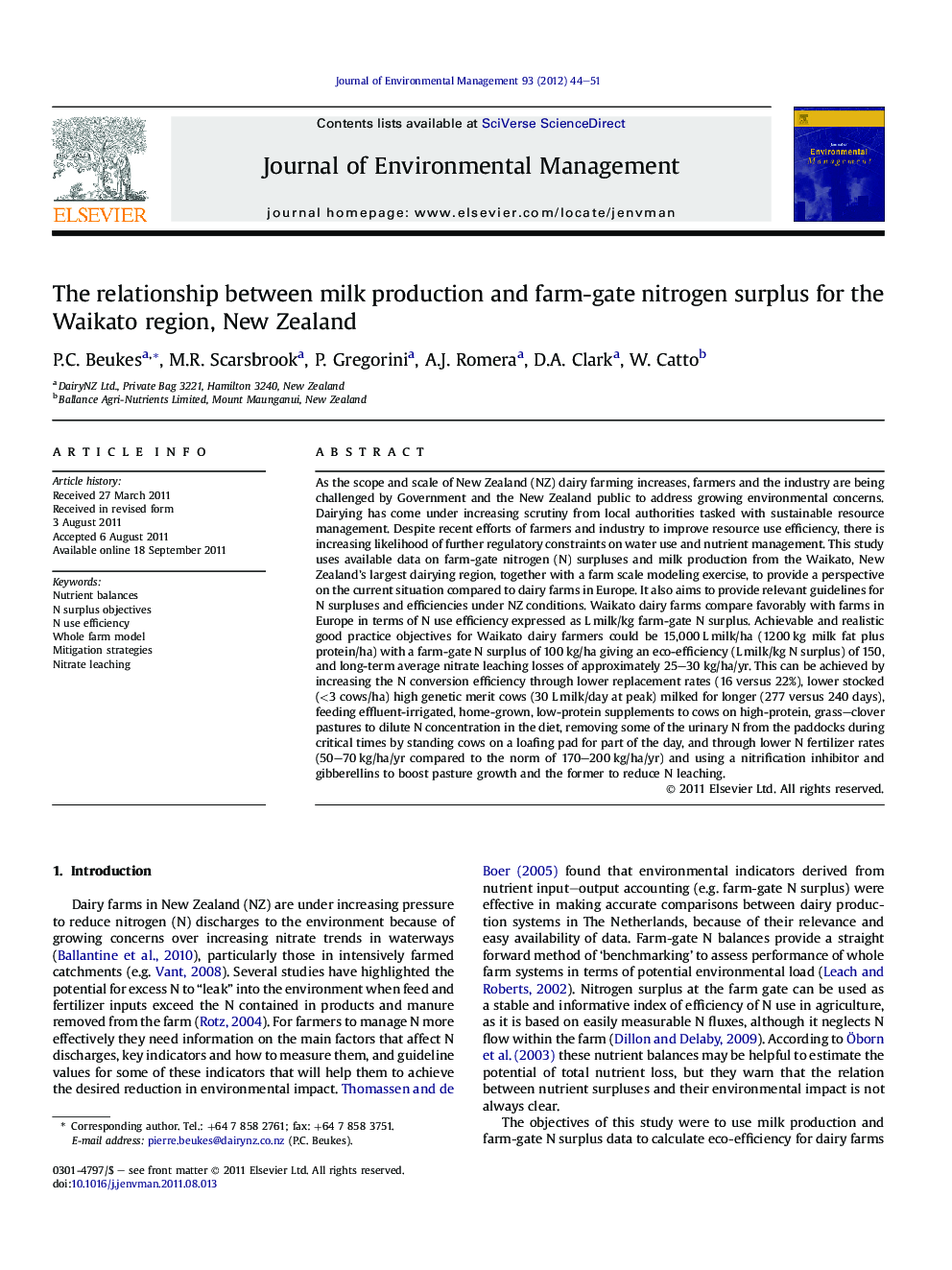| Article ID | Journal | Published Year | Pages | File Type |
|---|---|---|---|---|
| 1056965 | Journal of Environmental Management | 2012 | 8 Pages |
As the scope and scale of New Zealand (NZ) dairy farming increases, farmers and the industry are being challenged by Government and the New Zealand public to address growing environmental concerns. Dairying has come under increasing scrutiny from local authorities tasked with sustainable resource management. Despite recent efforts of farmers and industry to improve resource use efficiency, there is increasing likelihood of further regulatory constraints on water use and nutrient management. This study uses available data on farm-gate nitrogen (N) surpluses and milk production from the Waikato, New Zealand’s largest dairying region, together with a farm scale modeling exercise, to provide a perspective on the current situation compared to dairy farms in Europe. It also aims to provide relevant guidelines for N surpluses and efficiencies under NZ conditions. Waikato dairy farms compare favorably with farms in Europe in terms of N use efficiency expressed as L milk/kg farm-gate N surplus. Achievable and realistic good practice objectives for Waikato dairy farmers could be 15,000 L milk/ha (1200 kg milk fat plus protein/ha) with a farm-gate N surplus of 100 kg/ha giving an eco-efficiency (L milk/kg N surplus) of 150, and long-term average nitrate leaching losses of approximately 25–30 kg/ha/yr. This can be achieved by increasing the N conversion efficiency through lower replacement rates (16 versus 22%), lower stocked (<3 cows/ha) high genetic merit cows (30 L milk/day at peak) milked for longer (277 versus 240 days), feeding effluent-irrigated, home-grown, low-protein supplements to cows on high-protein, grass–clover pastures to dilute N concentration in the diet, removing some of the urinary N from the paddocks during critical times by standing cows on a loafing pad for part of the day, and through lower N fertilizer rates (50–70 kg/ha/yr compared to the norm of 170–200 kg/ha/yr) and using a nitrification inhibitor and gibberellins to boost pasture growth and the former to reduce N leaching.
► Waikato farms are relatively efficient in terms of L milk/kg farm-gate N surplus. ► Realistic targets could be 15,000 L milk/ha with farm-gate N surplus of 100 kg/ha. ► This should give average nitrate leaching losses of approximately 25–30 kg/ha/yr. ► A key factor for achieving this is efficient capture of feed N into product. ► Another factor is minimizing the duration and size of unused soil mineral N pools.
